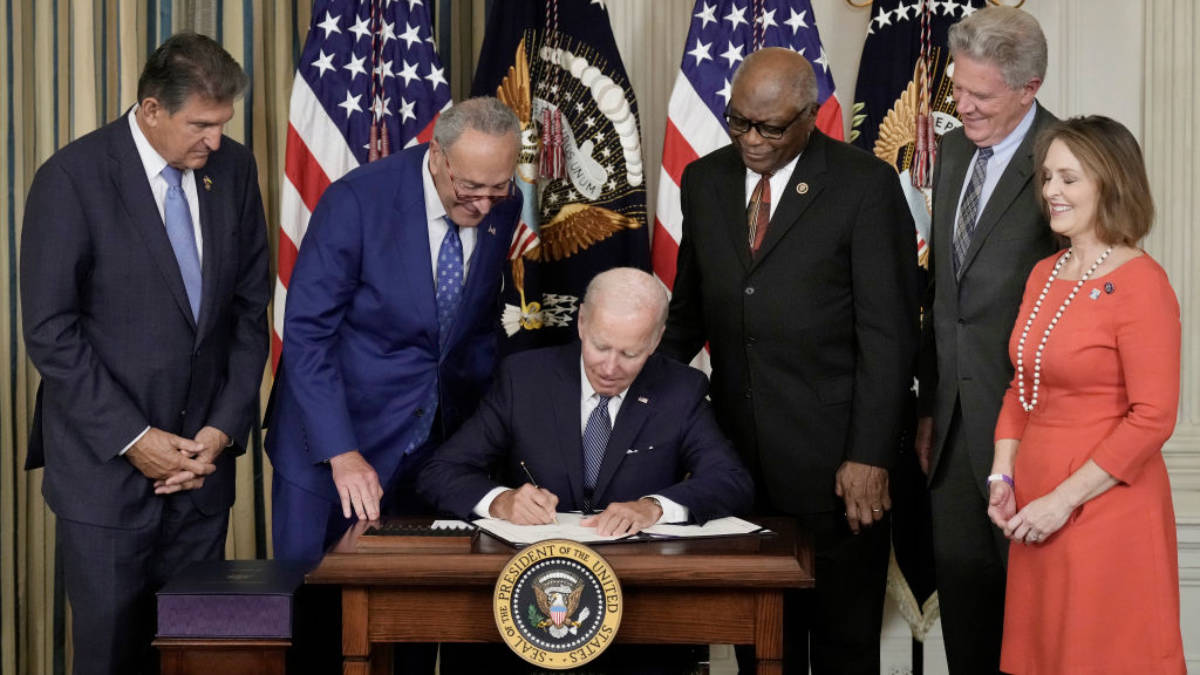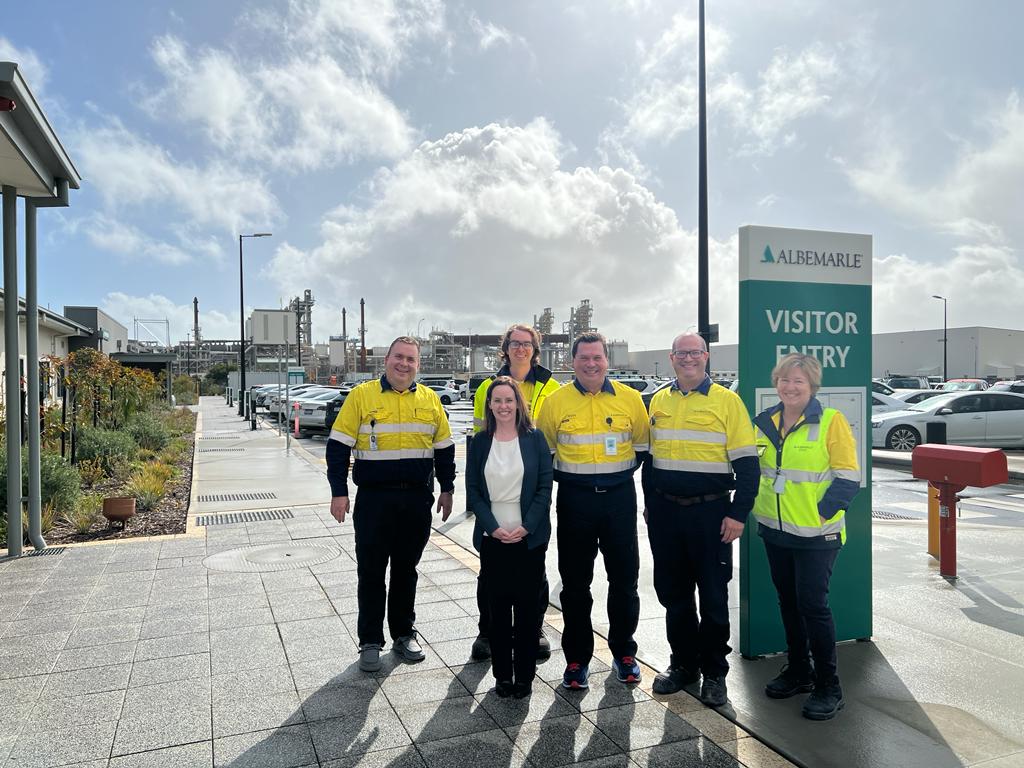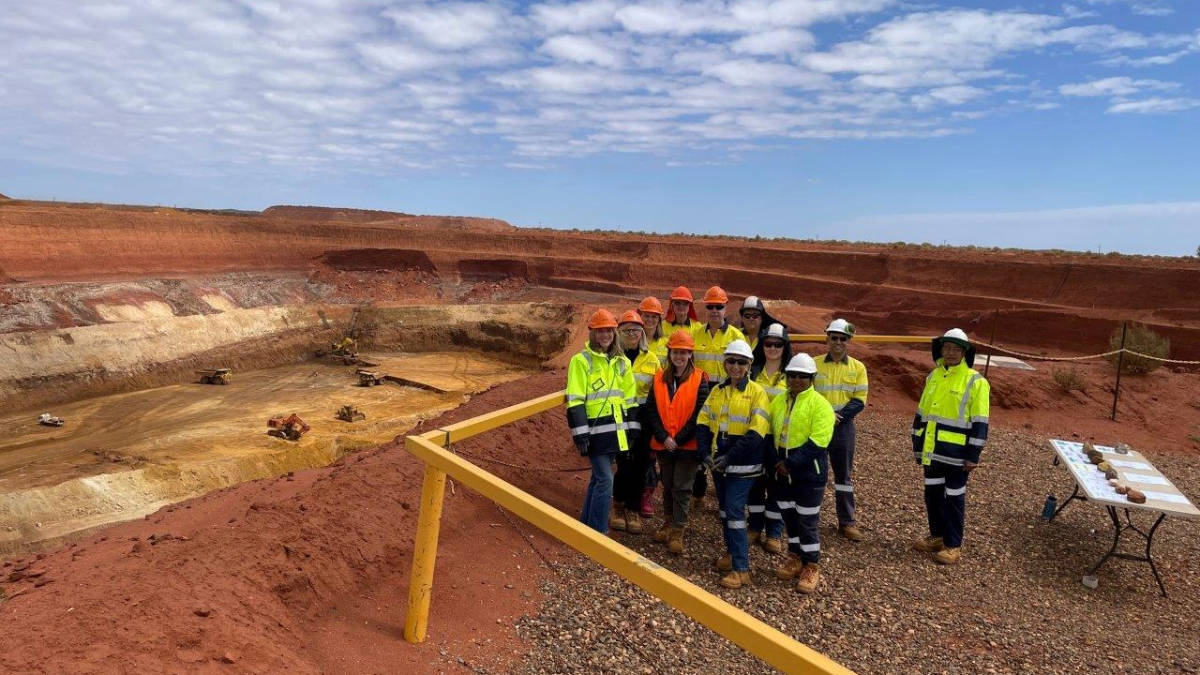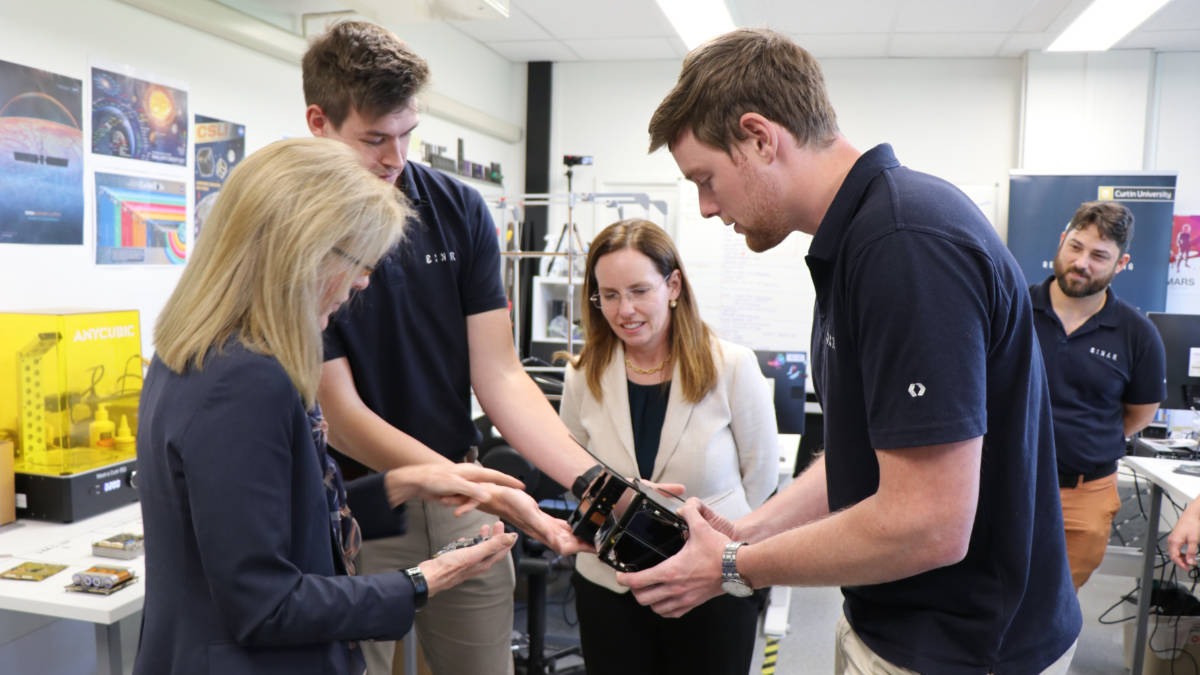You might be interested in
Mining
Explorers Podcast: Arizona Lithium optimistic on bountiful brine
Mining
Monsters of Rock: MinRes has 'seen the bottom' in lithium prices, Lynas tightens the screws on rare earths supply
Mining
Mining
August 16, 2022. It’s a date only the most dedicated of trivia buffs will recognise as the 45th anniversary of Elvis Presley’s untimely passing.
But it’s also a date that represents arguably the most pivotal moment in the global fight against climate change.
At a special ceremony inside the White House, United States President Joe Biden signed the US$740 billion Inflation Reduction Act (IRA) into law. We can only speculate as to whether a classic Elvis tune might have been playing in the background.
Of the US$440 billion in new spending announced as part of the landmark climate change, healthcare and tax bill, nearly $US370 billion is being directed towards initiatives which cut carbon emissions and encouraging the shift away from fuel fossils.
The IRA (not to be confused with the Irish republican paramilitary force that sought to end British rule in Northern Ireland several decades ago) was described at the time as “the most significant action Congress has taken on clean energy and climate change in the nation’s history”.
President Biden himself declared the historic legislation a win for the American people, but its impact stretches well beyond US borders.

US Consul General for Western Australia, Siriana Nair, arrived in Perth to start her new role just 10 days after the IRA was passed into law.
It was therefore inevitable the Arizona native would spend the next few months explaining exactly what it meant for Australian companies doing business with any US supply chain.
And given Perth’s reputation as Australia’s unofficial mining capital, it was also inevitable most, if not all of those interactions would pivot towards critical minerals such as lithium, copper and rare earths.
“When the IRA first came out, people had a lot of questions,” Nair told Stockhead.
“It’s not so much about inflation as it is climate and green energy. This is the single largest investment in history to combat climate change. Hundreds of billions of dollars in incentives are being deployed to speed our transition to a clean, green and sustainable future.
“The United States is very focused on addressing the climate challenge and finding and developing new sources of clean energy to fuel that green transition. Obviously, critical minerals are going to be a huge part of that as well.”

In just 15 months since the IRA was passed into law, the US has become the largest source of foreign direct investment in Australia’s critical minerals sector.
At least $5 billion (US$3.3 billion) has been invested from the US Government in Australia’s critical minerals sector since the passage of the IRA and other legislation such as the Bipartisan Infrastructure Law and the CHIPS and Science Act. Headlining these investments is US-based lithium giant Albemarle which recently announced it was doubling the production capacity at its Kemerton lithium hydroxide plant in WA.
Australian resources companies have also secured offtake agreements from US manufacturers worth an estimated $19 billion (US$13 billion). This list includes upcoming lithium producer Liontown Resources (ASX: LTR), manganese miner Element 25 (ASX: E25) and downstream nickel hopeful Queensland Pacific Metals (ASX: QPM).
The likes of Syrah Resources (ASX: SYR) and Lynas Rare Earths (ASX: LYC) have also struck key partnerships with the US Department of Energy (DOE) and Department of Defense (DOE) respectively to construct advanced processing facilities on American soil.
Nair expects to see more agreements and partnerships rolled out over the coming years.
“Australia and the US have a long history of economic cooperation,” she said.
“The US has long been Australia’s largest foreign investor and Australia’s second largest trading partner for total goods and services. There’s been about $2.2 trillion in two-way investment with about $1 trillion invested by Australians in the US and about US$1 trillion invested here in Australia.
“We’re really proud to be Australia’s top economic partner. This is only going to enhance what’s already been going on for a long time.”

While the IRA has vaulted the once-neglected US resources sector back into the foreign investment spotlight, it is easy to forget several Australian companies have been active in the country for a number of years.
Many of those longstanding ASX-listed explorers and developers have been focused on lithium, having first entered the US during the initial price “boom” for the popular battery mineral in the mid-2010s.
One of the country’s oldest residents is Ioneer (ASX: INR) which is developing the Rhyolite Ridge lithium-boron project in Nevada. Earlier this year the company received a conditional US$700 million loan from the DOE’s Loan Office Program. Construction could begin next year pending completion of the US federal permitting process, including a record of decision by the Bureau of Land Management.
As its name suggests, Arizona Lithium (ASX: AZL) has a big presence in Arizona via its 320,000t Big Sandy lithium brine project and a nearby Lithium Research Centre where it not only tests its own direct lithium extraction (DLE) technology but also methods developed by third parties.
Jindalee Lithium (ASX: JLL) picked up the McDermitt lithium project in Oregon in 2018 but is only starting to gain wider attention from the market. With a resource of 21.5Mt, McDermitt is the largest hard rock lithium deposit in the US and is located just 30km away from its closest analogy, the 19.1Mt Thacker Pass project currently being developed by the General Motors-backed Lithium Americas Corp.
In Utah, another long-term resident Anson Resources (ASX: ASN) recently started construction of a sample demonstration plant for its Green River lithium project which the company plans to develop in parallel with its lead asset, the nearby 1.038Mt Paradox lithium project.
QX Resources (ASX: QXR) is a relatively new addition to the US resources landscape but quickly piqued the interest of the market after entering an agreement to earn a 75% interest in the 102km2 Liberty lithium brine project in California back in October. While its scale makes it one of the largest single lithium brine projects in the US, its potential to host the same geology as Albemarle’s nearby producing Silver Peak deposit in Clayton Valley, Nevada has put the company on the radar of many investors.
While most of its focus is in Australia, Future Battery Minerals (ASX: FBM) is working towards delivering a maiden resource at Lone Mountain, part of its Nevada lithium project, early next year.
Investor eyes are closing watching how Chariot Corporation (ASX: CC9) fares with its maiden drilling campaign at the Black Mountain lithium project in Wyoming. Shares in the company recently surged as high as $1.36 following its ASX debut in late October.
Uvre (ASX: UVA) also recently picked up ground in Wyoming believed to be prospective for lithium.

There could be further incentives to come for US-focused Australian resources companies should President Biden fulfil his promise to Prime Minister Anthony Albanese earlier this year to have Australia designated as a domestic source under the US Defense Production Act.
Nair also believes there remains untapped opportunities for Australia and the US to build on its burgeoning relationship in the minerals space, particularly when it comes to downstream manufacturing.
“The COVID pandemic revealed some of the vulnerabilities to a variety of supply chains and the importance of having secure supply chains,” she said.
“I think you’ll definitely see Australian and American producers and suppliers working together and being mutually beneficial to one another. And I think that’s also something really unique about our economic relationship, it’s not just a transactional relationship, it’s a mutually beneficial relationship.
“We certainly benefit from working with Australian companies that are so innovative and have high environmental and labour standards. Hopefully, the Australian companies benefit from working with us as well.”
At Stockhead, we tell it like it is. While Anson Resources, Arizona Lithium, Chariot Corporation, Future Battery Minerals, Ioneer, Jindalee Lithium, QX Resources and Uvre are Stockhead advertisers, they did not sponsor this article.